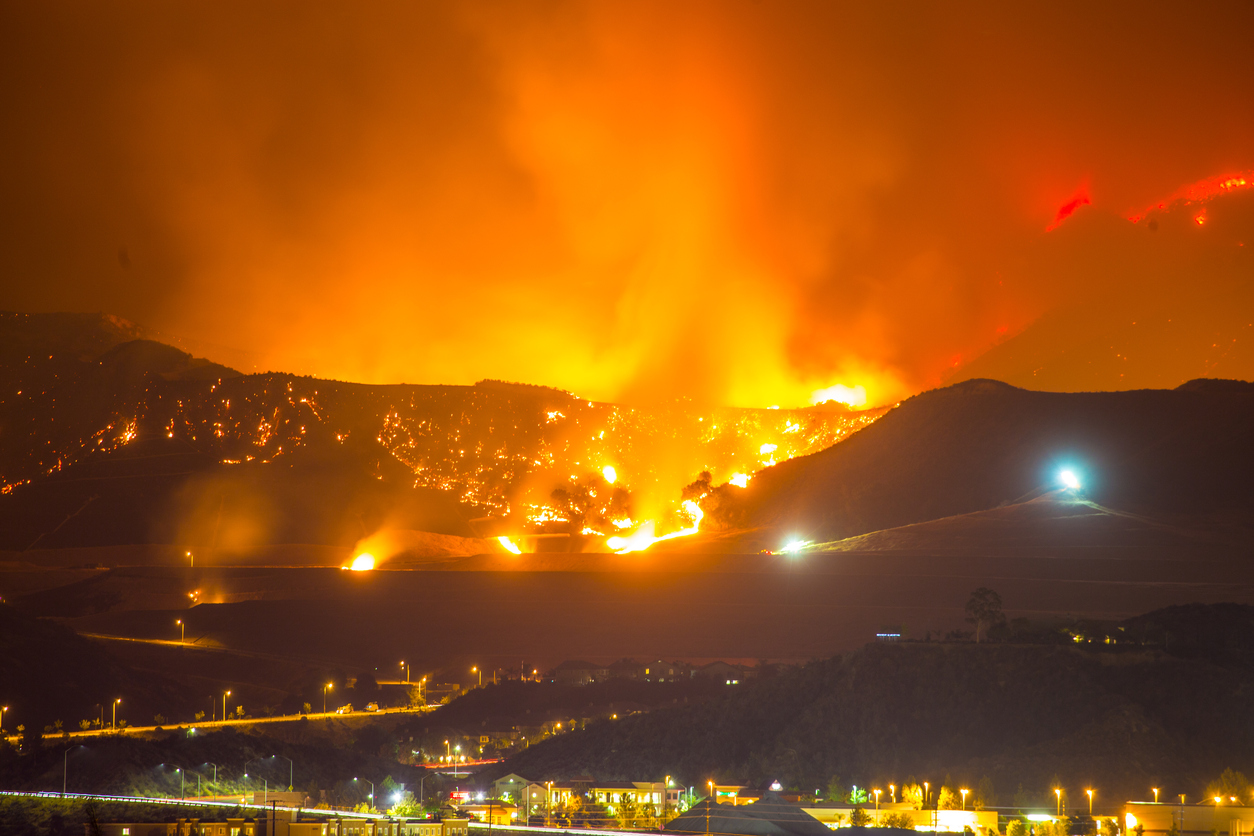Home-insurance companies in the Golden State are canceling some policies, refusing to sell new ones in certain areas and applying for rate increases as they look to reduce wildfire risk.
“It’s getting harder and harder to find someone to write [insurance for] any given particular piece of property,” said Bob Anderson, co-owner of Fromarc Insurance Agency Inc. in South Lake Tahoe, Calif.
Insurers including State Farm and Allstate Corp. have filed to raise home-insurance rates in the past six months. The California FAIR Plan, the state insurer of last resort, said it would implement an average 20.3% price increase in April, with the largest increases for policies in wildfire-exposed areas.
California has always been prone to wildfires, but insurers say the risk is increasing as fire-prone areas have become increasingly populated and a warming planet adds new uncertainty to natural catastrophes. State wildfires in 2017 and 2018 cost insurers more than $23 billion, according to the California Department of Insurance. Some market participants expect that total to rise.
“Homeowners in any area with high risk will likely have fewer options for coverage,” Ricardo Lara, California’s insurance commissioner, said in a statement.
The vast majority of California homeowners are still insured by standard insurers like State Farm and Farmers Insurance. But growing numbers are buying insurance from surplus carriers that specialize in unusual risks, an option that is available only to homeowners rejected by traditional insurers. Surplus policies tend to be more expensive, and they don’t need state approval for the prices they charge.
Surplus insurers sold about 49,000 homeowner policies representing $122 million in premium in 2018, up from 30,500 policies and $77.6 million in premium in 2014, according to the Surplus Line Association of California.
One homeowner who turned to surplus insurance was Eileen Kleinschmidt, who was on vacation in early 2017 when she found out her insurer, Hartford Financial Services Group Inc., wouldn’t renew the $1,600 annual policy on her three-bedroom house in Sutter Creek, Calif. Ms. Kleinschmidt’s house wasn’t damaged in a recent fire, but it is in a high-risk area for wildfires.
“I spent the first week of our vacation on the phone trying to find somebody that would cover us,” she said. “They’d ask me what my address was, and that’s as far as it went.”
Ms. Kleinschmidt bought insurance from Scottsdale Insurance, a surplus carrier owned by Nationwide Mutual Insurance Co., for $2,500 a year. This year, Scottsdale raised her premium to $4,000, she said.
Hartford and Nationwide said they don’t comment on individual policies.
More home-insurance cancellations are expected in the coming year, agents said. State law required insurers to offer at least one renewal to homeowners who suffered a total loss in the 2017 and 2018 wildfires. For some wildfire victims, notices of nonrenewal are just starting to arrive, according to local insurance agents.
“It does seem like the whole market is tightening underwriting at once,” said Bill Caldwell, executive vice president of property and casualty at insurer Horace Mann Educators Corp.
Travelers Cos. isn’t renewing some of its California home policies “to address some of the more significant wildfire exposures in the portfolio,” said Michael Klein, executive vice president and president of personal insurance, in a Jan. 22 earnings call.
Allstate has reduced its California home-insurance policy count by about 50% in the last decade due to concerns including wildfire risk, Chief Executive Tom Wilson said in an interview. Allstate and other insurers have also been stricter about requiring their policyholders to clear brush from around their homes to reduce fire risk.
Homeowners who can’t obtain traditional insurance can still buy coverage from the state insurer of last resort, the California FAIR Plan.
The FAIR Plan was founded in 1968, after brush fires and the Watts riots in Los Angeles, to cover properties the private sector wouldn’t insure. FAIR Plan fire-insurance policies don’t include standard home coverages like water damage, theft or liability.
FAIR Plan enrollment fell in 2018 to just over 128,000 policies and is seeing a small increase in new policies this year, said Anneliese Jivan, president of the California FAIR Plan Association. “We are not seeing an issue with the availability of property insurance in California despite the wildfires,” she said in an email.
The plan’s coming price increase is partly due to the risk of wildfire losses, she said.
John Ferguson has a FAIR Plan policy for his two-bedroom house in La Porte, Calif., and he pays for a separate liability-insurance policy.
But “a lot of my neighbors don’t have any insurance at all,” he said.













